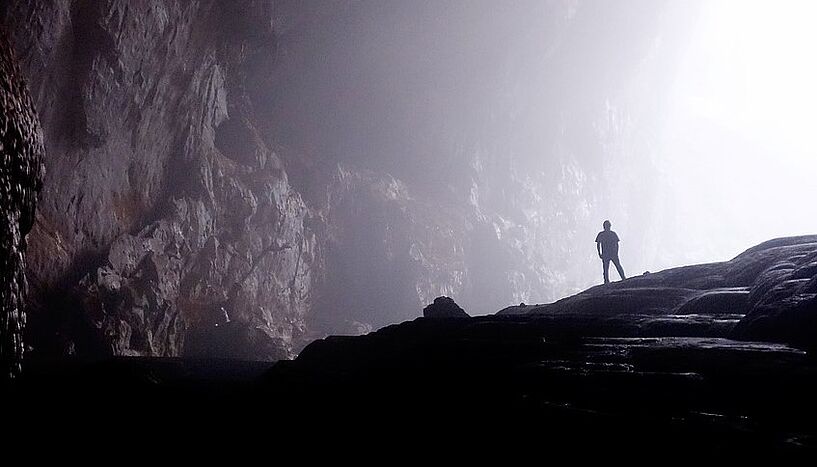Discovery of the oldest modern humans in Europe
10. February 2022
© pixabay
New evidence for the presence of Homo sapiens in western Europe more than 50,000 years ago
An international team of researchers has revealed new evidence for the presence of Homo sapiens in western Europe more than 50,000 years ago. The results of a 30-year programme of research from a cave in the heart of the Rhône Valley of France show that the traditional story of the replacement of Neanderthals by modern humans was much longer and more complex than previously thought. The results of the scientifc team with participation of Tom Higham from the University of Vienna show that early humans in the region were themselves replaced by Neanderthals, before Neanderthals finally disappeared to extinction around 40,000 years ago.
It has been previously thought that modern humans reached European for the first time between about 43,000 and 45,000 years ago, steadily replacing local Neanderthal populations over the course of several thousand years. At the site of Grotte Mandrin in the Rhône Valley of southern France, however, researchers led by Dr Ludovic Slimak of the Université Toulouse have found evidence for occupation by modern humans at a much earlier date than ever seen before. High precision dating using radiocarbon and a method of sediment dating called Optically Stimulated Luminescence, or OSL, shows that an archaeological horizon which contains evidence for Homo sapiens dates to 54,000 years ago. This is 10 to 12,000 years earlier than other sites in western Europe.
Grotte Mandrin has also yielded evidence from one of the early archaeological layers at the site (Level E) for a unique stone tool industry called the Neronian. It differs from the toolkits of the Neanderthals in its methods of production, the presence of tiny points and the possible development of technology associated with bow and arrows, but until now the identity of its makers have been difficult to confirm. New evidence presented by the team, however, shows the presence of a human tooth in the same horizon suggesting strongly that Level E was produced by modern humans, rather than Neanderthals. The team suggests that the modern human group occupied the site for about 40 years, returning annually to it while exploiting a large territory of several hundred kilometers. However, they did not persist for long; Neanderthals reoccupied Mandrin and the Rhône valley not long afterwards. It would be more that 10,000 years until Homo sapiens returned and replaced Neanderthals.
The discovery has fundamental implications for our understanding of the colonization of the continent by our ancestors as well as for the relationships between Neanderthal populations and Homo sapiens. The scientific team has shown that the first documented arrival of Homo sapiens in Europe took place in the heart of the Rhone Valley and in an area still dominated by Neanderthals. The time separating the occupation of these two groups in the cave has been estimated at a maximum of a few seasons, indicating a general contemporaneity of the Neanderthal and modern human populations, either in the cave itself or on its surrounding territory.
Professor Tom Higham of the University of Vienna, who led the dating work, said that "The results of this research invite us to rethink the relationship between modern humans and Neanderthals. It is clear that these groups were contemporaries across the broad region and that Homo sapiens did not simply enter the continent and quickly replace local Neanderthals as previously thought. This tells us that this idea that we had an innate superiority is not supported. Instead, it may be that different waves of settlers came into Europe at different times, and the process of Neanderthal disapperance occurred over a much longer timespan, more than 10,000 years, during which time the groups were in touching distance to one another".
The analysis of human remains in the deep archaeological sequence of Mandrin shows at least four phases of replacement in the last 10 millennia of the Neanderthals’ existence - Neanderthals, H. sapiens, Neanderthals, H. sapiens - inviting us to rethink the equilibrium that existed between these human groups. In addition, the study also demonstrates the existence of very strong technical and cultural links between the stone artifacts attributed to H. sapiens at Mandrin and the Near Eastern assemblages of the so-called Initial Upper Paleolithic, as defined in the east of the Mediterranean at the famous site of Ksar Akil in Lebanon. The technical and cultural similarities between the Neronian industries of Mandrin and Ksar Akil suggest the existence of trans-Mediterranean connections linking Europe and the Near East as early as 54,000 years ago.
Publication:
Ludovic Slimak, Clément Zanolli, Tom Higham, Marine Frouin, Jean-Luc Schwenninger, Lee J. Arnold, Martina Demuro, Katerina Douka, Norbert Mercier, Gilles Guérin, Hélène Valladas, Pascale Yvorra, Yves Giraud, Andaine Seguin-Orlando, Ludovic Orlando, Jason E. Lewis, Xavier Muth, Hubert Camus, Ségolène Vandevelde, Mike Buckley, Carolina Mallol, Chris Stringer, Laure Metz, 2021. Modern human incursion into Neanderthal territories 54,000 years ago at Mandrin, France. Science Advances.
Further inquiry
Mag. Alexandra Frey
Media Relations ManagerUniversität Wien
1010 - Wien, Universitätsring 1
+43-1-4277-17533
+43-664-8175675
alexandra.frey@univie.ac.at
